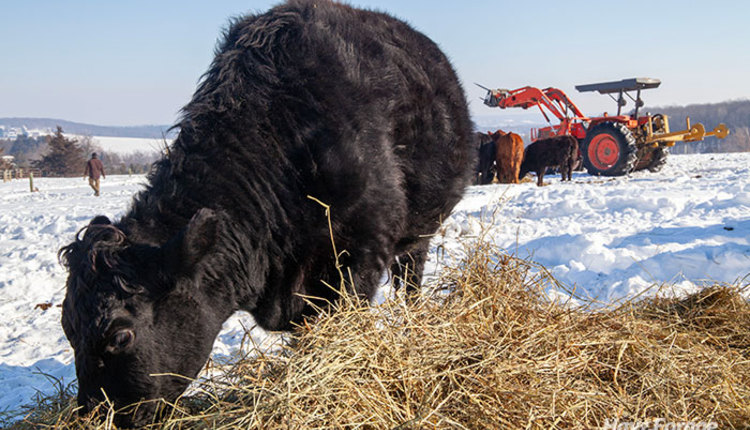
The possibilities are plentiful when it comes to feeding cattle in the winter. Grazing options include stockpile grazing, bale grazing, and windrow grazing, to name a few. Otherwise, producers can provide animals hay in a feeder on or off the pasture.
In addition to available resources and the location of a farm, Jordan Penrose with Ohio State University Extension notes forage availability and stocking density can influence how producers approach winter feeding. No matter the strategy, the extension educator says the primary factors of winter feeding management are forage quality, supplementation, and future planning.
Grazing or feeding hay. Penrose states some producers may keep grazing livestock through the winter while others have already started feeding hay. Either way, he points out the implications winter weather can have on a forage stand.
“When the ground gets wet and muddy due to snow, rain, and freezing and thawing, do you have a plan for your livestock to keep pastures from being destroyed and to keep your livestock’s daily intake of feed where it needs to be so they don’t lose condition?” he asks.
Feeding hay on a cement pad will limit damage to winter pastures, but this could take a steep investment to install. Dedicating a portion of a pasture as a sacrifice paddock may be a less expensive alternative. “This should be an area where it is relatively easy to feed livestock with little to no slope to minimize erosion and that can be easily restored if heavy damage has occurred,” Penrose states.
Forage quality. Testing stored forage quality is critical to ensure livestock meet their nutritional needs throughout the winter. Penrose reminds producers the three key values of a forage quality analysis are total digestible nutrients (TDN), neutral detergent fiber (NDF), and crude protein (CP).
He also offers a few benchmarks to keep in mind when making feeding decisions. For example, a TDN value less than 60% will not be sufficient for a 1,200-pound beef cow. Moreover, NDF of 60% or higher will likely limit forage intake due to low digestibility.
Crude protein will vary with different forage species and harvest timing. Penrose adds that assessing the look and smell of hay can help producers evaluate spoilage and weathering, but they should not rely on this type of appraisal to estimate quality.
Supplementation. Supplementation will be necessary if forage supplies are low and/or if forage quality is less than ideal. Penrose suggests supplementing hay with corn to stretch supplies; however, producers must be mindful of how the high energy feedstuff can impact the rumen.
He also recommends grazing cattle on cornstalks or hayfields where forage is available. For this to work, though, there must be adequate fencing and a water source. Penrose also cautions that heavy hoof traffic can cause pugging in hayfields, which could negatively impact forage growth next year.
Future planning. Planning for the future requires reflecting on the past. For this reason, Penrose encourages producers to consider how well pastures performed last year and whether forage yield and quality met their expectations. Then, they can determine if implementing a different grazing strategy or reseeding pastures would be useful to meet their goals next season.

